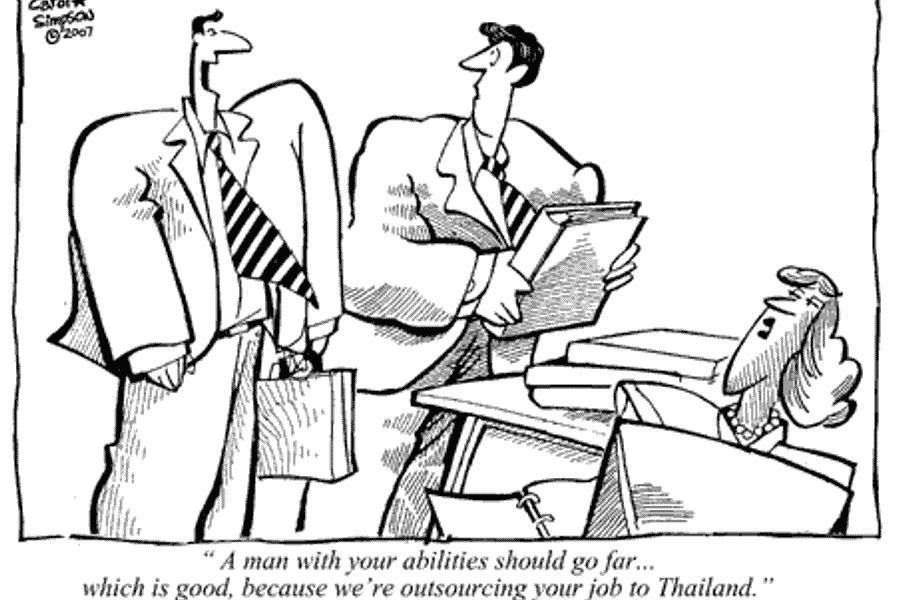
Lawmakers and corporations have worked hard these past few weeks to cinch a slew of free trade agreements in Congress, eager to repeat the tried-and-true formula of shifting jobs overseas and undermining working conditions at home and abroad. But just as the ink was starting to dry, something got in the way: workers.
Public skepticism about free-trade policies seems to have persuaded key Democrats to hold off on the heavily hyped deals with South Korea, Panama and Colombia, which have been pending since the Bush administration. President Obama and Democratic senators reportedly want to leverage the resistance of unions and fair-trade campaigners by holding off on signing the agreements until Congress extends the federal Trade Adjustment Assistance program (TAA), which aims to assist U.S. workers hurt by globalization.
The TAA program has historically served as a critical safety net for workers displaced by the movement of jobs overseas, helping them get the skills or resources to land a new job or move up on the career ladder.
The proposed reauthorization of TAA appears to be basically an extension of previous reforms that expired in early this year. The Recovery Act of 2009 expanded the program to cover a wider range of workers, including service workers, not just the traditional blue-collar victims of factory shutdowns.
According to Bloomberg News, many of the workers aided last year were call-center agents who’ve been left behind as companies outsource to English-speaking employees in countries like India. Other enhancements included expansions in health insurance access and, according to the Labor Department, stronger vocational training programs that are “necessary for jobs in the 21st century economy.”
But is all that really enough to stave off the steady erosion of U.S. workers’ job security in recent years? The annual number of certified petitions for TAA assistance has covered a just a tiny slice of the workforce, especially considering how drastically globalization has reshaped the economy.
Nonetheless, TAA has made inroads. The number of certifications for assistance spiked in fiscal year 2010, covering more than 280,000 workers, in part due to increased eligibility. About 44,000 workers entered training programs. The employment retention rate for those who’d passed through the program exceeded 80 percent. Despite the relatively small scope of many local TAA programs, it’s a lifeline for tens of thousands of workers in states that were slammed hard by the recession, like Michigan, North Carolina and Ohio.
The political use of the TAA as a speedbump for the free trade pacts should draw much needed attention to the often overlooked, chronically underfunded federal programs for workforce training and development.
Lately, workforce programs have come under scrutiny for supposed redundancy and inefficiency. But research by the Center for Law and Social Policy reveals that the programs are not in fact wasteful, because while many programs offer similar services, they often serve unique populations and respond to specific community or sector needs. Indeed, with millions facing long-term unemployment, it’s clear that more, not less government investment is needed to soften the blow for vulnerable workers.
Some critics doubt the effectiveness of workforce programs. But the limited research that has been published so far suggests the programs yield significant benefits, especially if the evaluation includes broader measurements of the more social impacts, like how the social fabric of a rust belt community changes when a local career center opens up to help neighbors find new opportunities. Or the value of a child growing up in a home where her single mom was able to earn community college credits part-time.
And even in terms of immediate economic impacts, CLASP reports that “Participants in sector-based training programs earned 18 percent — about $4,500 — more than control group members during the two years of the study.”
But while there should be renewed interest in TAA and other workforce programs in Congress, no readjustment program will offset the systemic barriers to opportunity that many workers face. The workers who participate in these programs are typically in their forties, with a high school education or less, pushed out of a job they’d held for many years – representing the demographics most vulnerable to policies like the trade deals moving through Congress.
Their struggles stem not just from cyclical unemployment but also chronic economic insecurity, and perhaps most of all, the government’s long-term neglect of public education. Today’s mainstream education reform efforts continue to fail, both at building a workforce prepared to deal with globalization, and at building a stronger society with an empowered, socially conscious citizenry. Genuine workforce investment would begin on a child’s first day of school, cultivating independent, engaged minds that understand the value of an individual’s labor, and know how to build and protect a community’s wealth amid a brutal global economic landscape.
For now, the best investment Congress is willing to offer is to help workers “readjust” to a fundamentally unjust system. Because if dislocated workers had the power do more than that, then they might begin to realize that it’s time to make the system adjust to the people’s priorities.
Michelle Chen is a contributing writer at In These Times and The Nation, a contributing editor at Dissent and a co-producer of the “Belabored” podcast. She studies history at the CUNY Graduate Center. She tweets at @meeshellchen.








